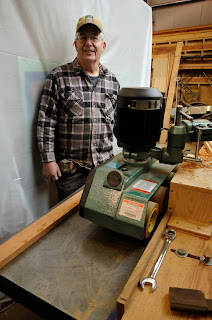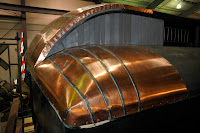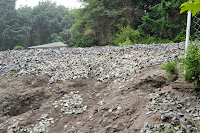 |
| Deputy director Jessie C., Visitor services James S., Volunteer coordinator Cristy L., Bookkeeper Jennifer Y. and Director Richard A. |
In their roles as museum educators, staff work hard to remain truthful and accurate in creating interpretive programming. However, they must also use today's conventions to help people understand yesterday's. Identifying the year-end holiday season as "Christmas" considers a recent Angus Reid Global poll that found 80% of people in the United States, Britain and Canada prefer to call the holiday season "Christmas." That is a pretty convincing majority!
So what do a refer car, box car, brakeman, coach car, express car, locomotive, conductor, railroad bridge, depot, and chapel car all have to do with "Christmas?" Everything!
While examining the impact of railroads on the Northwest it is nearly impossible to ignore the role of significant cultural practices, including the celebration of Christmas. Why? Christmas and other major holidays have had - and continue to have - a tremendous impact on railway transportation including express, freight and passenger service. Railroads brought (bring) families together, letters and packages to family members, and goods to retailers. Railroads even transport many Christmas trees from farms to your local communities. So Christmas might not be very merry without the railroad!
Thank you to everyone!
As another successful Santa Train program is completed and 2013 draws to a close, I am delighted to reflect upon another great year at the Northwest Railway Museum. In doing so, what is clearly evident are all of the generous contributions of time, talent and funding that have helped make the Northwest Railway Museum and its programs possible. By the numbers, the human side of the Museum's success was a handful of management and other key staff, a dozen trustees and advisers, a gaggle of special contractors, more than 125 volunteers, and hundreds of donors. They all worked together to serve more than 90,000 guests who got to see and understand the role railroads played in the development and settlement of the Northwest.
From all of us to all of you, have a Merry Christmas!
--Spike















































